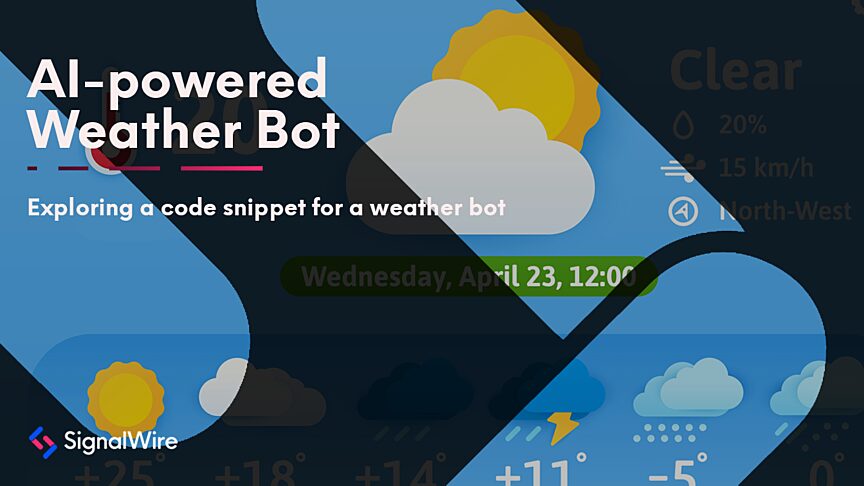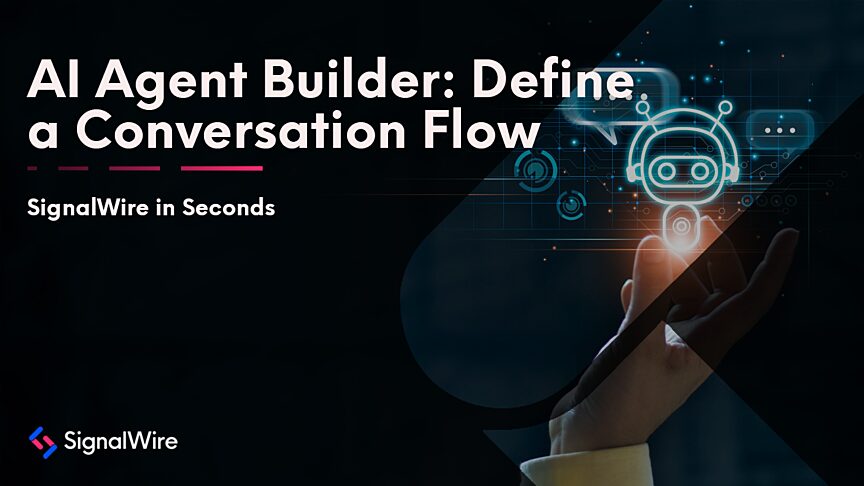What is SignalWire AI Agent?
SignalWire AI Agent allows you to build smarter voice applications using the power of conversational AI. By using an AI agent to replace phone trees or creating a virtual receptionist, live agents can be better prepared for calls and have more time to work on complex tasks.
AI Agents are adept at handling customer support tasks, such as opening tickets and basic troubleshooting. In this post, we’ll explore toggling functions that allow the AI to retrieve user and ticket information from backend systems.
Expanding the functionality of an AI Agent
Previously in SignalWire in Seconds, we looked at the basics of how to define a conversation flow for an AI agent. Now we’ll explore how to enhance an AI agent with functions.
Functions allow you to extend the capabilities of your AI agent with HTTP requests to perform actions or fetch extra data. For this example, the AI agent is focused on retrieving user and ticket information - even before greeting the caller. By leveraging this functionality, the AI agent can greet the caller by name and have their ticket information prepared when the call begins.
The video above walks you through the process of creating an AI agent, configuring the essential functions get_user and get_latest_ticket, and running make.com workflows to retrieve data from Zendesk during the call. This allows the AI agent to adapt and respond contextually.
Here is the call flow we arrived at by the end of the video:
Although the video provides a completely no-code example, you can host your own HTTP server if you prefer. At the end of the day, all the AI agent cares about when it calls a function is that it receives a valid response:
AI agents are powered by SignalWire Markup Language (SWML). Looking under the hood at the resulting SWML from this AI agent, we see the following information:
Both functions are extremely simple. While powerful and extensible, they are enabled the entire time during the call. To address this, let's dive deeper into the capabilities of function toggling.
Understanding toggle_functions
Controlling when certain functions are available creates safer, more intelligent, and predictable conversations. The toggle_functions option allows you to control when specific functions are active. This becomes especially useful when you want certain functionalities to be available only under specific conditions.
Protecting get_latest_ticket
Let's illustrate this with a practical example involving the get_latest_ticket function:
By adding
```yaml active: "false" ```
to this function, we ensure that until instructed otherwise, the agent will never be able to call get_latest_ticket.
Now let's assume we only want get_latest_ticket to be active after fetching the caller's information. In the above video, we had our webhook return the following JSON:
Instead of only returning a response, in order to enable the get_latest_ticket function, we need to return action as well:
Making the response:
This way, when a user requests to get an update on their latest ticket, the AI agent can fulfill the request because the get_latest_ticket function is active.
Toggling functions results in more control over what your AI agent can and can't do, making the call flow something like this (notice each function's status):
By mastering the art of toggling functions, you can create AI agents that adapt intelligently to user interactions, making your conversational applications more dynamic and user-friendly. If you don't already have a SignalWire Space, sign up today for a free trial and experiment with our AI Agent!
As you learn more about SignalWire's capabilities, visit our developer documentation, and join the vibrant SignalWire community on Slack and our forum to bring questions to the team and share your projects!




